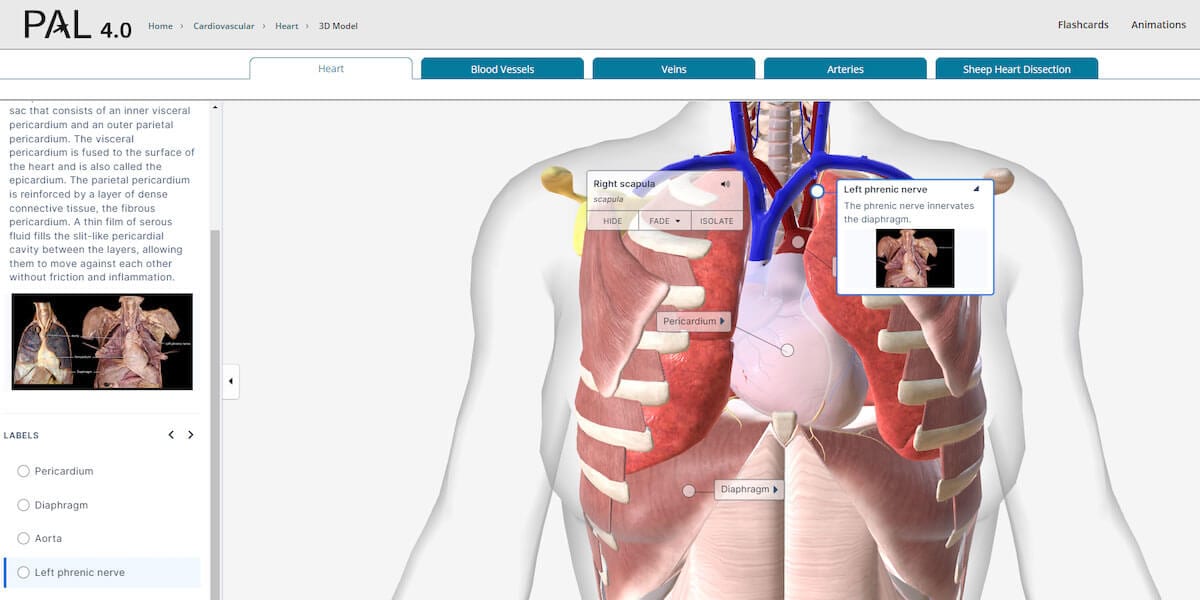With the prevalence of artificial intelligence (AI) becoming more widespread since ChatGPT first launched in November 2022, professors and students alike have wondered how to use this newer technology effectively and ethically in the higher education landscape. With this in mind, Pearson conducted a webinar with professors, authors, and students from across the country to discuss some of the concerns, benefits, and best practices when it comes to utilizing generative AI.
The moderator, Dr. Peter Foltz from the University of Colorado and NSF AI Institute for Student-AI Teaming was joined by Dr. Amos Olagunju, Professor of Practice at the University of Kansas, Dr. Terri Moore, Professor at Eastern Florida State College, Dr. Ramesh Sharda, Vice Dean for Research and the Watson Graduate School of Management, Watson/ConocoPhillips Chair and Regents Professor of Management Science and Information Systems in the Spears School of Business at Oklahoma State University, Kylie Guzman, student at Western Kentucky University, and Saige O’Rourke, student at the University of Tennessee.
Impact of AI
Generative AI, such as ChatGPT, has already significantly impacted the way professors and students approach higher education. Amos feels there have been many facets that have been transformed such as academic outcomes, ways to engage students in critical thinking, writing, analysis, and creation of course content. In the analytics and data science field, Ramesh sees a potential reduction in the time professors need to create content, as they can use AI to generate custom sets of data. He also believes that “ChatGPT can be used as a friend to reduce academic integrity issues.”
When it comes to application research, Ramesh has seen that with ChatGPT, better quality academic papers can be produced. It can help with literature reviews, summarizing research gaps, design experiments, and generating regression charts or histograms. One consideration he noted is that ChatGPT can also create fake references that look entirely legitimate. Other, broader, AI applications he noted include customer support and IT coding. He can see how there is potential for a lot more research on AI saying, “I think there are quite a few research opportunities in terms of testing the effectiveness, efficiency, and validation of the technologies used. So, at least in the short term, there is an opportunity to build a research portfolio where you have the testing of this technology.”
There are a variety of ways students can use ChatGPT to assist and enhance their learning. Kylie uses it for brainstorming. She will input the topic and then tailor the response to match her unique voice. She also uses it to help understand scholarly articles when they are complicated or unfamiliar. She will input parts of the article and ask it to rephrase, summarize, and/or explain it to her in a way that resonates with her. Saige also uses it for brainstorming but finds it to be beneficial when she is in a rush as the immediate generated responses save her time. As a professor, Peter also sees the benefits of using AI for brainstorming. He suggests using AI for students’ writing to help generate ideas but cautions that clear documentation of their process is necessary. “You tell students that they can use it for the first part but then they’ve got to write on their own all while submitting all of their processes that they went through.”
Instead of taking teaching opportunities away from professors, Ramesh sees that AI is creating more instances where the human touch, the human voice, the human reflection, is needed. “ChatGPT is creating a much larger role for professors because there is only so much that students can do with a computer. The professor needs to be there to both check the assessment and keep the human side of it... It falls more on the professor to figure out where the assessment lies and how to keep that connection to the students so that they’re both able to assess them at a more personal level but also keep them more motivated as they are working.”
AI considerations
Ramesh also discusses the “generative” aspect of ChatGPT allowing researchers to create synthetic data efficiently for use in other research. The same capability can also be used to create custom datasets for use by each student in class assignments so as to minimize the incentives for cheating.
There is uncertainty about how to best use AI without allowing it to become a crutch or another easily accessible way for students to cheat. There is also a lot of confusion by professors and students on how to effectively use AI which has impacted expectations, with Saige saying, “The roles of professors and students are changing and shifting. We all have different ways of using AI and maneuvering the classroom to avoid cheating and use it in a productive way... We want to embrace technology, not rely on it.” Kylie agrees, commenting, “I see AI as a resource, not a solution.”
Cheating is an all-too-common issue in higher education. With the advances in AI, some professors are concerned there will be even more opportunities for cheating, without the more straightforward ways of determining who is and isn’t cheating. This has prompted Terri to consider how she is designing her assessments in an effort to curb this potential issue. She no longer asks multiple choice questions or uses tests that she has used often in the past, as they are easy to find online. Now she asks students to explain concepts from the course and how they apply to their individual real-world experiences. “It requires more grading on my part but what I tell my students is, learning is not easy. If it is easy, you’re probably not learning. Assessing isn’t easy. Unless it is costing you something as a faculty member, you’re probably not assessing their real mastery. So, I am challenging myself to look at different ways of assessing and saying, perhaps the cheating is too available because the way we’re assessing is too easy to cheat. I also begin to think about the reasons behind the lack of integrity in our students with their academic honesty.”
Using AI to generate an entire assignment does not allow for development of critical thinking skills, creativity, or unique human expression. In order to negate this issue of using AI to do their work, Saige suggests, “Students should be encouraged to work with AI instead of having it do the work for them. This way they can continue to be creative with their minds, let that creativity flow, and use it for brainstorming instead of a crutch.” Terri agrees about the importance of creativity, not just for students completing assignments, but for professors creating assessments. She feels that modeling creativity encourages students to engage in cultivating their own creativity as well. “If I am relying on things that are on Quizlet, I’m certainly not doing my job. I’m not giving students a creative assessment that lets them show me their creativity in return.”
In addition to creativity, Kylie maintains that developing critical thinking skills is also a necessity in professional life. “I think it’s just as important to be teaching critical thinking because growing as a young professional, that’s what’s going to get me places. Even if I use AI as a tool, I need to make sure critical thinking is a foundation of it.” She feels it is also important for professors to foster passion in their students which also encourages the creativity and critical thinking aspects saying “Professors have to make sure that the student is actually passionate about what they’re learning because if there’s no passion, they are not going to want to learn, no want to be creative, no want to be critical, no want to look deeper into what is taught to them.” Amos sees AI as a tool to enhance students’ creativity and critical thinking, both of which prepare them for their careers. “AI is here to help promote human creativity. However, as we prepare our students for teamwork in the real world, they must realize the importance of divergent thinking. But of course we can use the artificial intelligence tools to boost students’ analytical and decision-making abilities and to heighten their creativity.”
Best practices
Institutions and individual professors need to establish academic honesty policies with clear expectations for students on how AI generated content is to be utilized and the consequences if they use it to cheat. This is also set out in pointed conversations with students about what cheating really is and that AI is only to be used as a tool. “We are going to have to be open and embrace this as a wonderful, wonderful tool for our classes.” Peter cautions professors against using various tools that claim to determine whether assignments were generated by AI as they have high false positive rates. Instead, he agrees that relying on a set of policies is the best practice.
As part of these academic policies, Amos and Terri believe students need to understand that any use of AI needs to be cited, just as any other reference would need to be. In the syllabus Amos clearly states the consequences of cheating and incorrectly citing or leaving out references. The first instance is a warning, the second includes a penalty. Terri is also very clear about the consequences of cheating in her syllabus. They will get a zero on their assignment, but she allows them another attempt at the assignment, with students understanding they will not be able to achieve full credit due to the cheating. “I think you have to allow students to make errors and use it as a learning moment to teach students about academic honesty.”
Setting clear expectations for students is something Saige also feels is of the utmost importance. It is critical, especially in these early days of incorporating AI into higher education, to be upfront about how students are supposed to use AI and what professors are willing to allow. “Having a conversation about it and not ignoring it anymore is a really big thing. Just be clear on guidelines and expectations because some professors may encourage using AI to its fullest while some encourage it only to tailor it to yourself. We don’t know where to go if there’s no guidance.”
In an effort to embrace AI generated content, Terri shared an example of her colleague who uses ChatGPT for an assignment. The colleague requires students to create an AI generated essay which they bring to class, and they discuss how they can make it more personal, more human. This leads to discussion about what it means to be human, which Terri believes will become a more prevalent topic of conversation the more AI is utilized. “I think we’re on the cusp of an amazing, amazing adventure in education.”
Keeping the human connection with their professors and peers motivates students to engage deeper with a course, according to Saige and Kylie. Saige appreciates it when her professors are personable and approachable. She feels this makes the classroom dynamic and relationship with her professor unique. “Small, personal, interactions with my professor make me want to pay attention in class versus if I am treated as just another ant in the ant farm of their classroom because if I am, I am not going to want to pay attention just as much as they don’t want to teach in the large lecture hall. So, I think treating your students as people is important. We are all people either trying to get a job done or do our job.” Collaboration with her peers is incredibly motivating and fosters creativity for Kylie, especially collaboration with those that have the same major, minor, or focus as her as this presumably means they have similar interests and passion for the field. “We all share our experiences and share different ways we are either loving what we’re learning or struggling with what we are learning... When professors can encourage us to work with one another, I think that’s the best way to cultivate creativity.”
Conclusion
Artificial intelligence has the ability to change the higher education landscape in a positive way. As long as there are academic honesty policies and expectations in place, both professors and students can thrive with its use. Used in a thoughtful way, panelists believe it can support students’ creativity and critical thinking, as well as help professors create materials and assist with assignments. AI can be a valuable supplement in the classroom, but it cannot replace the human connection or voice.








